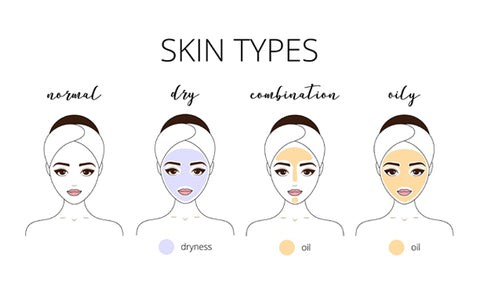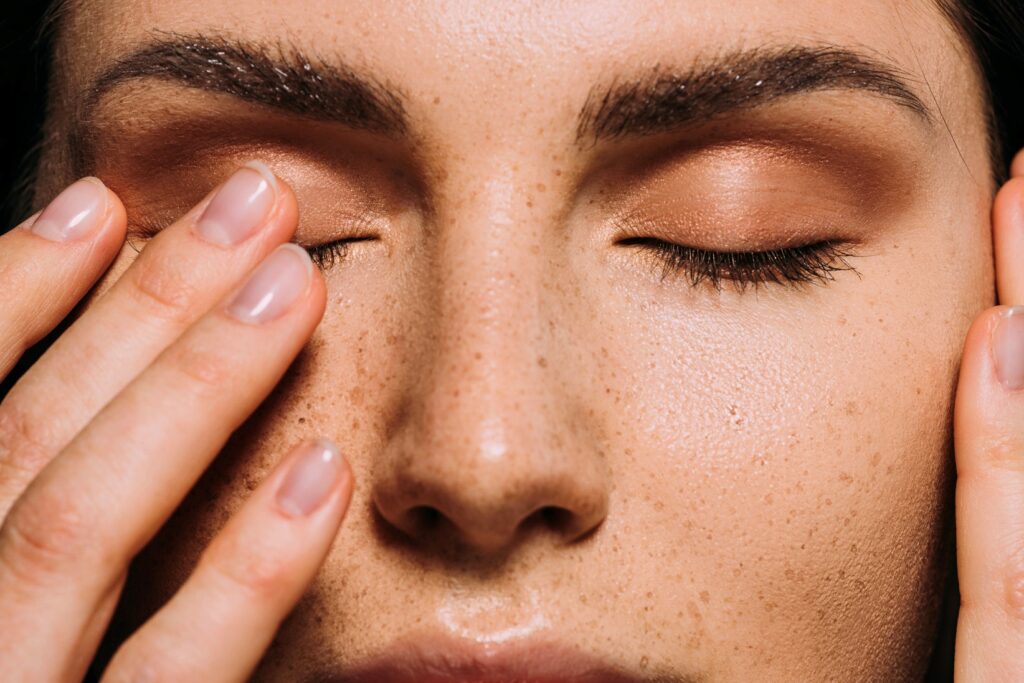
In “Oily, Dry, or Combo? stylish.ae’s Deep Dive into the World of Skin Types,” you’ll explore the fascinating world of different skin types and learn how to identify and address your specific concerns. Whether you struggle with oily, dry, or combination skin, this article from stylish.ae will provide you with valuable insights, tips, and tricks to help you achieve a healthy and radiant complexion. By understanding the unique characteristics of your skin, you’ll be able to make informed skincare choices and tailor your routine to meet your specific needs. Get ready to unlock the secrets to glowing skin and embrace your individual beauty!

Understanding Different Skin Types
When it comes to taking care of your skin, one size does not fit all. Every person has a unique skin type, and understanding yours is the first step towards achieving healthy and glowing skin. In this article, we will delve into the world of skin types, specifically oily skin, dry skin, and combination skin. By understanding the characteristics, causes, and management tips for each skin type, you can tailor your skincare routine to suit your specific needs.
Oily Skin
Oily skin is characterized by its tendency to produce excess sebum, resulting in a shiny or greasy appearance. People with oily skin often find themselves battling with acne and breakouts. The overproduction of sebum can clog pores and lead to the formation of blackheads and whiteheads. If you have oily skin, fear not! With the right knowledge and skincare routine, you can manage and improve your skin’s condition.
Excess Sebum Production
One of the key characteristics of oily skin is the excessive production of sebum. Sebum is an oily substance produced by the sebaceous glands, which are found all over the body. While sebum is necessary to keep the skin moisturized and protected, an overproduction can lead to oily skin.
Shiny or Greasy Appearance
Another telltale sign of oily skin is the shiny or greasy appearance. You may notice that your face appears to glisten, especially in the T-zone area (forehead, nose, and chin). This shine can make you feel self-conscious and may even interfere with your makeup staying power.
Acne Prone
Perhaps the most frustrating characteristic of oily skin is its tendency to be acne-prone. The excess sebum can clog pores, creating a breeding ground for bacteria and causing pesky breakouts. If you find yourself dealing with persistent acne, it’s essential to address the root cause – your oily skin.
Causes of Oily Skin
Understanding the causes of oily skin can help you pinpoint the triggers and make necessary adjustments to your skincare routine. While some factors, such as genetics, are beyond your control, there are lifestyle changes you can implement to manage your oily skin effectively.
Hormonal Changes
Hormonal changes play a significant role in the production of sebum. During puberty, hormonal fluctuations can lead to increased oil production, resulting in oily skin. Hormonal imbalances during menstruation or pregnancy can also cause temporary changes in sebum production.
Genetics
Unfortunately, oily skin can be inherited. If your parents have oily skin, there is a high chance that you will also have inherited their skin type. While you can’t change your genes, you can certainly adapt your skincare routine to manage your oily skin effectively.
Diet and Lifestyle
Certain lifestyle factors, such as diet, can contribute to oily skin. Consuming a diet high in processed and sugary foods can stimulate the production of sebum. Additionally, stress levels and lack of exercise can also trigger the overproduction of sebum. By adopting a healthy lifestyle and nourishing your body from within, you can help manage your oily skin.
Tips for Managing Oily Skin
Managing oily skin doesn’t have to be a daunting task. With the right skincare routine and some small adjustments to your daily habits, you can conquer the shine and enjoy clearer, healthier skin.
Cleansing and Exfoliating
Proper cleansing is vital for oily skin types. Look for gentle cleansers specifically formulated for oily or acne-prone skin. These cleansers will help remove excess oil, impurities, and makeup without stripping your skin of its natural moisture. Exfoliating once or twice a week can also help unclog pores and remove dead skin cells, reducing the likelihood of breakouts.
Using Oil-Free Products
When it comes to choosing skincare products, opt for oil-free options. These products are specifically designed to moisturize and nourish your skin without adding excess oil. Look for non-comedogenic products, as they are less likely to clog your pores and contribute to breakouts.
Avoiding Heavy Makeup
While makeup can enhance your natural beauty, heavy, oil-based foundations and powders can exacerbate the shine on your face. Instead, choose lightweight, oil-free, and non-comedogenic makeup products. Avoid using thick layers of products and allow your skin to breathe.

Characteristics of Dry Skin
While oily skin needs to manage excess oil production, dry skin requires a different approach. Dry skin is characterized by a lack of moisture, often resulting in a flaky or rough texture. Those with dry skin often experience tightness or discomfort, especially after cleansing or exposure to harsh weather conditions.
Lack of Moisture
The primary characteristic of dry skin is a lack of moisture. This can be due to a variety of factors, including a compromised skin barrier that fails to retain hydration. Dry skin often feels tight and may have a dull appearance due to the lack of hydration.
Flaky or Rough Texture
Another common characteristic of dry skin is a flaky or rough texture. The skin may appear dry and uneven due to the buildup of dead skin cells. Regular exfoliation and proper moisturization can help improve the texture and smoothness of dry skin.
Tightness or Discomfort
Dry skin tends to feel tight and uncomfortable, especially after cleansing or exposure to dry environments. It can often be sensitive to certain skincare products and may show signs of irritation or redness. Taking extra care to moisturize and protect your skin is crucial for managing dryness and preventing further discomfort.
Causes of Dry Skin
Understanding the causes of dry skin can help you take the necessary steps to replenish and hydrate your skin effectively. Identifying the underlying factors can also help you determine the best skincare routine for managing dry skin.
Climate and Weather
Climate and weather conditions can significantly impact the hydration levels of your skin. Exposure to dry air, cold temperatures, or low humidity can strip away moisture from your skin, leaving it dry and dehydrated. Harsh winds and extreme temperatures can also contribute to skin dryness.
Ageing
As we age, our skin naturally produces less oil and moisture. The decrease in sebum production, combined with the loss of collagen and elasticity, can contribute to dry skin. Age-related hormonal changes can also affect oil production, leading to drier skin.
Harsh Skincare Products
Using skincare products that contain harsh ingredients or are not suitable for your skin type can also contribute to dryness. Harsh cleansers, alcohol-based toners, and certain exfoliators can strip away natural oils from your skin, drying it out in the process. Opting for gentle, hydrating, and soothing products can help keep your skin moisturized.

Tips for Managing Dry Skin
Managing dry skin requires a gentle and nourishing approach. By incorporating specific skincare practices into your daily routine, you can restore moisture, improve skin texture, and alleviate discomfort.
Moisturizing Regularly
The key to managing dry skin is consistent and targeted moisturization. Choose a moisturizer that is rich in hydrating ingredients, such as hyaluronic acid or ceramides. Apply moisturizer twice a day – once in the morning and once at night – to lock in hydration and replenish your skin’s moisture barrier.
Using Gentle Cleansers
When cleansing your skin, opt for gentle, hydrating cleansers that do not strip away your skin’s natural oils. Avoid harsh soaps and cleansers with strong fragrances or sulfates as these can further dry out your skin. Instead, choose mild cleansers that are specifically formulated for dry and sensitive skin.
Avoiding Hot Showers
While hot showers may be soothing, they can worsen dry skin. Hot water strips away the natural oils from your skin, leaving it feeling even drier. Opt for lukewarm water when showering or bathing, and try to limit your time in the water to prevent excessive moisture loss.
Characteristics of Combination Skin
Combination skin is perhaps the most common skin type, combining elements of both oily and dry skin. People with combination skin often have an oily T-zone (forehead, nose, and chin) while experiencing dryness on their cheeks. Dealing with combination skin can be a delicate balancing act, but with the right knowledge and skincare routine, you can achieve harmony for your skin.
Oily T-Zone and Dry Cheeks
One of the key characteristics of combination skin is the contrast between the oily T-zone and the dry cheeks. The sebaceous glands in the T-zone produce excess oil, leading to a greasy and shiny appearance, while the cheeks may feel tight and dry. Understanding the needs of each area is crucial for effectively managing combination skin.
Uneven Texture
Due to the differences in oil production and moisture levels, combination skin often exhibits an uneven texture. The T-zone may have larger pores and a rougher texture, while the cheeks can appear smoother. Tailoring your skincare routine to address these distinct characteristics can help balance your skin’s texture.
Prone to Breakouts and Dry Patches
Combination skin can be prone to both breakouts and dry patches. The excess oil in the T-zone can clog pores and result in acne, while the lack of moisture on the cheeks can lead to flakiness and dry patches. Understanding how to handle both conditions simultaneously is essential for managing combination skin.

Causes of Combination Skin
Combination skin is influenced by various genetic, hormonal, and environmental factors. While it may seem challenging to tackle both oily and dry areas, understanding the causes can help you take a targeted approach to effectively manage combination skin.
Genetics
Genetics play a significant role in determining your skin type, including combination skin. If your family members have combination skin, you are more likely to inherit this skin type. While you cannot change your genes, you can adapt your skincare routine and habits to cater to your unique skin type.
Hormonal Factors
Hormonal changes can affect the oil production in your skin, leading to combination skin. Fluctuations in hormones throughout puberty, menstrual cycles, or pregnancy can impact the sebaceous glands’ activity. Identifying hormonal triggers and adjusting your skincare routine accordingly can help manage combination skin.
Environmental Factors
Environmental factors, such as climate and weather conditions, can also contribute to combination skin. Exposure to dry or cold air can cause the cheeks to become drier, while hot and humid weather can intensify oil production in the T-zone. Adapting your skincare routine to suit the changing seasons and climates can help maintain balance for your combination skin.
Tips for Managing Combination Skin
Managing combination skin requires a targeted approach that takes into account the specific needs of both oily and dry areas. By adopting a balanced skincare routine and using suitable products, you can achieve healthy and harmonious skin.
Balancing Skincare Routine
A balanced skincare routine is crucial for managing combination skin. Use a gentle cleanser to remove dirt and impurities without stripping away the natural oils from your skin. Follow up with toners and moisturizers that are formulated for combination skin to provide hydration to the dry areas without adding excessive oil to the T-zone.
Using Targeted Products
To address the distinct characteristics of combination skin, consider using targeted skincare products. For the oily T-zone, opt for oil-free and mattifying products that help control oil production and minimize shine. For the dry cheeks, choose moisturizers that are rich in hydrating ingredients to nourish and replenish moisture.
Multi-Masking
Multi-masking is a popular technique for managing combination skin. This involves applying different masks to specific areas of your face to cater to each area’s needs. Use a purifying mask on the T-zone to control oil and reduce shine, while applying a hydrating mask on the cheeks to replenish moisture. This targeted approach can help balance and rejuvenate your skin.
In conclusion, understanding your skin type is essential for developing an effective skincare routine. Oily skin, dry skin, and combination skin each have their unique characteristics, causes, and management tips. By identifying which category your skin falls into, you can tailor your skincare routine to suit your specific needs and achieve healthy, radiant skin. Whether you’re battling excessive oil, seeking to alleviate dryness, or managing combination skin, remember that taking care of your skin is a personal journey. Embrace your skin type, adopt a gentle and nurturing approach, and glow with confidence.
From Acne To Zits: Stylish’s Guide To Navigating Oily Skin Challenges(Opens in a new browser tab)
Oil Balance: Managing Oily Skin With Stylish.ae’s Best Practices(Opens in a new browser tab)



